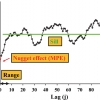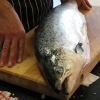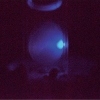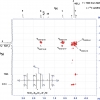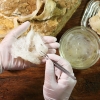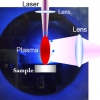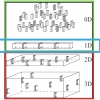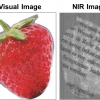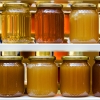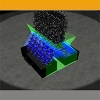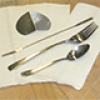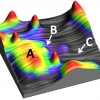Pierre Gy, the inventor of the Theory of Sampling (TOS), pioneered applications of variography to understanding large-scale variability in process plants and process control from as early as the 1950s and devoted a major part of his TOS development period to this subject. The variogram allows one to identify sources of variability and provides valuable insight into correlations between successive samples. Neglect or poor understanding of the data analytical capabilities of the variogram means that it has not been widely applied in process control until now, except in industry sectors which have embraced TOS (mining, cement and certain parts of the process industries) because of the overwhelming consequences of making wrong decisions when treating vast tonnages—the consequences of wrong decisions are simply too great. Failure to address stream heterogeneity means that conventional statistics and Statistical Process Control (SPC) too often fail to identify and distinguish the true sources of variability in a process stream. For each type of heterogeneity, there is a matching variety of process variability. Although the method is powerful in terms of the insights one is able to gain in regard to plant performance and management, examples of the application of this particular method have been suspiciously little notable in the literature.
Articles and Columns
Pages
Colette Germon, Tony Davies and Paul Jones look at “Combining teaching chemometrics, with attenuated total reflection–infrared spectroscopy and food authentication”. They describe a teaching project based around the detection of food fraud. It is a good example of teaching spectroscopic data handling and advanced analysis techniques. They have investigated how adulteration and misrepresentation of meat and fish can be detected, as well as whether frozen and then thawed fish could be differentiated from chilled fish.
Peter Jenks and Alan Nichols embark on “ISO/IEC 17025: a never-ending journey”. They describe what is behind this recent standard and give valuable advice as to what to expect from an audit. Newcomers may find the requirements daunting, but Peter and Alan’s guidance will prove most helpful.
Dmitry Gakamsky and Anna Gakamsky describe how fluorescence may be used to diagnose cataracts in human eye lenses. Further, it may also be able to grade cataracts and monitor the disease’s progress, which may help discover metabolic and ambient factors that influence the progress of the disease.
After the previous column’s introduction to the why, the how and the technicalities involved in process sampling and variographic analysis, it is time for a bonanza of applications and case histories covering as broad a practical scope as possible. In this column, we introduce the critical prerequisites for the variographic experiment, by focusing on the importance of TOS-correct increment extraction for proper variographics. This issue cannot be overemphasised.
Chris Burgess and John Hammond look back 40 years to the start of GLP regulations and consider how closely qualification processes are aligned to quality by design principles.
Developments in hardware, higher field instruments, better multinuclear probes including cryoprobe options, spectrometer control systems and also desktop NMR data processing software have all combined to make the measurement of inorganic nuclei a potentially commonplace and very helpful, often complementary, technique to other spectroscopic analytical tools.
Edible bird’s nest (EBN) is a highly valued food, especially in China. Due to this, there is the potential to bulk out the EBN with artificial additives to receive a higher price. This article shows yet another way in which spectroscopy is used to detect adulteration of food and prevent fraud in a quick and cost-effective manner.
This is the first of a number of columns dealing with process sampling, i.e. sampling from moving streams of matter. As will become clear there is a great deal of redundancy regarding how to sample both stationary and moving lots, but it is the specific issues pertaining to dynamic lots that will be highlighted.
We all know how spectroscopy and other analytical technologies have played important roles in detecting fraud and in authentication. Paper collages, or photomontages, are part of the art market that is seeing much interest amongst collectors. It is difficult to detect forgeries just through expertise. The use of NIR imaging offers a number of ways to identify forgeries or authenticate the collage non-destructively; from determining the glue used to the revealing of printing on the back of the pieces or paper, which often have been taken from books and magazines.
Peter Jenks and Alan Nichols plot a path through the accreditation jungle and decide that “Confidence: the key to quality”. With increasing numbers of readers’ labs requiring auditing, ensuring that the reference materials and standards you are using meet the requirements of the auditors is essential.
Tony Davies and Robert Lancashire ask “How standard are your standards?”. They describe a number of the organisations working with standards that affect the spectroscopy field. It looks as if free access to these may be the only way to ensure their longevity.
X-ray spectroscopy techniques have some advantages over other atomic spectroscopy techniques in the analysis of foods, for instance in not requiring significant sample preparation. Amongst these, TXRF has higher sensitivity and limits of detection in the ng range. The authors look at the analysis of a number of very different foods, including seafood, honey and vegetables.
Kim Esbensen and Claas Wagner have produced an extensive Sampling column, on “Representative mass reduction in the laboratory: riffle splitting galore (with or without errors)”. They guide readers through the choice of mass reduction equipment and what needs to be done to ensure representative sampling.
Kim Esbensen and Claas Wagner continue to stress that grab sampling is still an absolute no-no regardless of the size of the sampling device or the sample.
Next year, a new version of ISO/IEC 17025 will be published, which is going to mean changes for all those involved in quality systems. Peter Jenks investigates.
Tony Davies and Steven Brown explore the solid-state nuclear magnetic resonance spectroscopy facilities at the University of Warwick, UK.
This article demonstrates the capability of the near-field method to probe polymer microspheres within a protein matrix, and we present the first IRSR photothermal near-field Fourier transform infrared (FT-IR) spectrum from within an individual biological cell, which establishes the feasibility of hyperspectral mapping at sub-micrometre resolution in a practical timescale.
The CAL(AI)2DOSCOPE (Cryogenic Absorption/Luminescence Alignment Independent Alternative Intermittent Detection Optical µSCOPE) is a microspectrometer that was constructed with the aim to facilitate the correlated investigation of absorption and fluorescence emission properties of nanovolumic protein samples under modulatable actinic illumination.

